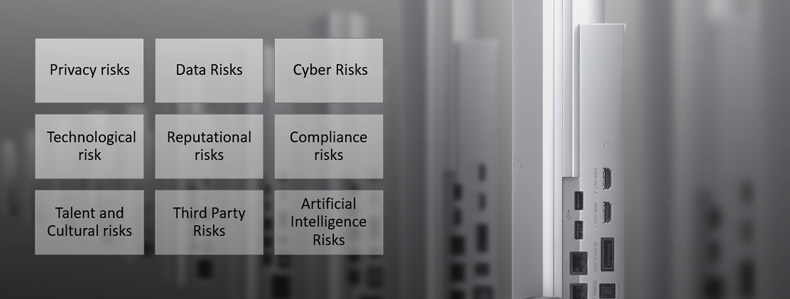Having an overall understanding of the existing digital security risk can help to design a decisive risk mitigation plan. Both small and large businesses are exposed to similar types of digital risk, which can cause serious damage to businesses unless handled carefully. The list below explains the nine types of digital risks you need to stay alert of.
1. Data risk– as you know that data is considered as the driving engine of the knowledge-based economy no mater in which industry you operate in, you need to make sure the business data are in safe hands. Data risk including misuse of your sensitive business data as well as clients’ or customers’ data.

2. Cybersecurity risk– there is no way to eliminate this risk as long as your business is connected to the Internet. As the cyber risk landscape is evolving rapidly and intuitively, the most command types of cyber risks are DDOS attach, ransomware, compromised networks.
3. Reputational risk– in 2018, Yahoo paid $50 mn in damages as a settlement over the 2013 data breach. In addition, their company valuation decreased significantly when they sell out the business to version. So, you need to take into account the reputation risk and make a well-devised plan on whether to avoid it or accept the risk.
4.Talent shortage and cultural risk- the lack of a skilled workforce may slow down the expected level of business growth. You may have a skilled team right now to support your ongoing project, but you may experience serious disruption when half of them leave your organization within a short notice. It can be easy to hire and fire an employee, but to keep an employee motivated to stick to your organization need some serious re-engineering of the organization’s culture responsible for employee turnover. Besides, the work culture is changing rapidly as more and more are opting towards freelancing and short-term contract role.
5.Privacy risk- if your business store personally identifiable information, you need to have a process in place that describes who you process, store, and secure the personally identifiable information collected from your users. You may have a look at the privacy laws of your country that describe how a business should deal with personal information.
6. Third-party risk- when you depend on third parties for services or for any other reasons, you need to have a process in place to manage that risk. For example, a third party can be involved in developing a piece of software for your business and they need access to your cloud environment to test how it. Make a list of third party services and software you use and then assign the critical of each service. next, you can make a risk mitigation plan that addresses each risk individually.
7. Technology risk– the technology you use now may become obsolete within a few years. Make a well-informed decision when you select the technology for your business, which includes the cloud platform, opensource product/paid product, programming languages, security tools, etc.
8. Artificial intelligence risk- the risk of artificial intelligence is, perhaps, the least understood digital risk among IT professionals. The reason behind the misconception is the lack of a comprehensive understanding of AI. As you know that the predictions and decisions made by AI may not be always correct. There is always a margin of errors that you have to accept.
9.compliance risk– though all industries do not have to comply with similar levels of compliance risks, you need to make sure your companies meet the minimum compliance required by the government and the other regulatory bodies. If your business is complied in your own country does not mean that you tick all the compliance boxes when you enter the international market. Make a list of compliances that you must meet and incorporate it into your risk mitigation plan so that you can protect your organization’s interests.
Finally, managing the digital risks requires a dedicated effort from every department of a business. IT alone cannot handle and manage all the risks unless the higher management fully commit, and take steps to alleviate the risks.
